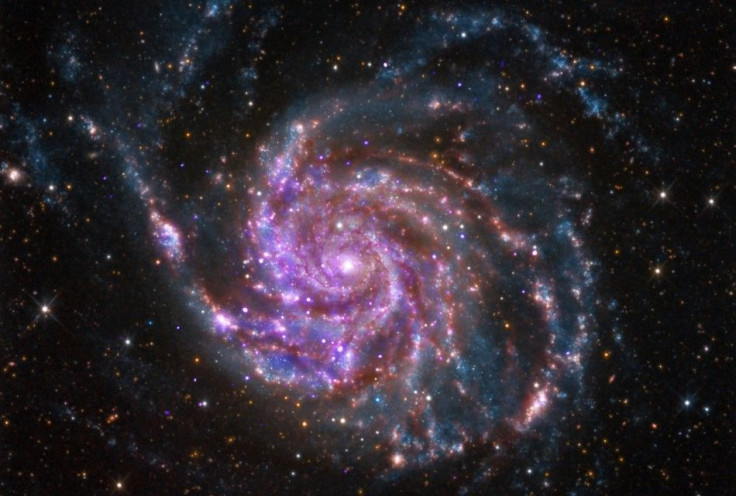Complex Alien Molecule May Offer Hints At Origin Of Life

Astronomers have found a new alien carbon-based molecule. It is found within a huge gas cloud at a distance of about 27,000 light years.
According to the Science Daily, the new found molecules that are necessary for life might have had their origins in interstellar space. The astronomers have detected that due to isopropyl cyanide, radio waves were emitted.
The Atacama Large Millimetre/sub-millimetre Array in Chile are a group of radio telescopes for which funds were partially got through the National Science Foundation. The ALMA observatory was used to study Sagittarius B2, a region of the ongoing star formation in the galactic centre of the Milky Way which is where the molecule was discovered.
The findings have been published in the journal Science. The complex molecules were discovered by astronomers from Cornell, the Max Planck Institute for Radio Astronomy and the University of Cologne.
A senior research associate at the Centre for Radiophysics and Space Research in Cornell, Rob Garrod said that this was the first interstellar detection of a molecule made as the carbon of the isopropyl cyanide had branched away. Usually, organic molecules in these regions have a single straight chain of carbon atoms.
He explained that the detection opens a new boundary in the complexity of the molecules that can be formed in space. He added that this could lead to finding the way to the surface of other planets.
Lead author Arnaud Belloche and Karl Menten, both of them from the Max Planck Institute for Radio Astronomy, along with Rob Garrod, are attempting to examine the chemical structure of a region close to the Milky Way's centre. In addition to that, a region that is rich in complex alien molecules is also going to be examined, reported BBC News.
Dr Arnaud Belloche explained that each of the molecules produced a different fingerprint of frequencies. He said that the frequencies had to be matched to the molecules in the laboratory. He added that it was important to know if these elements that were necessary for life to occur could be found in other regions of the Milky Way.
The head of the school of physics and astronomy at Cardiff University gave his comments on the discovery. He said that it was high-quality data. He added that it was an emphatic detection with multiple spectral signatures.





















